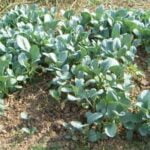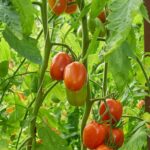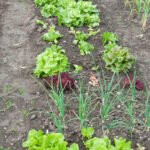Is cardboard safe for vegetable gardens? Many gardeners are asking this question as they seek eco-friendly and sustainable options for maintaining their vegetable plots. In this article, we will explore the benefits of using cardboard in vegetable gardens, how it works as a mulch, concerns about its safety in organic gardens, the types to use, how to lay it effectively, and tips for successful use.
As more people adopt environmentally conscious practices in their everyday lives, the use of safe and eco-friendly materials in gardening has become increasingly important. Vegetable gardens, in particular, require careful consideration when it comes to choosing materials that will not only benefit plant growth but also be safe for consumption.
One such material that has gained attention is cardboard. From its benefits to practical applications and safety concerns – we will delve into everything you need to know about using cardboard in your vegetable garden. So let’s explore the possibilities of using this readily available resource as a means of enhancing your garden’s productivity while promoting sustainability.
Benefits of Using Cardboard in Vegetable Gardens
Using cardboard as a mulch in vegetable gardens offers several benefits that can contribute to the overall health and productivity of the garden.
Suppresses Weed Growth
One of the primary advantages of using cardboard in vegetable gardens is its ability to suppress weed growth. When placed over the soil, cardboard blocks sunlight from reaching weed seeds, preventing them from germinating and growing. This can significantly reduce the amount of time and effort spent on weeding, allowing for more time to focus on tending to the vegetable plants.
Retains Moisture
Cardboard also acts as an effective moisture retainer in vegetable gardens. By placing cardboard over the soil, it helps prevent water evaporation, keeping the soil moist for longer periods. This is particularly beneficial during hot and dry weather conditions when maintaining adequate soil moisture levels is crucial for plant growth.
Improves Soil Health
In addition to suppressing weeds and retaining moisture, cardboard mulch can contribute to improving overall soil health in vegetable gardens. As cardboard decomposes over time, it adds organic matter to the soil, enhancing its structure and fertility. This natural decomposition process also encourages earthworm activity, which further aerates and enriches the soil.
Overall, utilizing cardboard as a mulch in vegetable gardens provides several practical benefits that can contribute to a more efficient and sustainable gardening experience.
How Cardboard Works in Vegetable Gardens
Cardboard is a popular and eco-friendly mulching material that can be used in vegetable gardens to suppress weeds and retain moisture. When used properly, cardboard can effectively block out sunlight and prevent weed growth, while also helping to conserve water by reducing evaporation from the soil. Understanding how cardboard works in vegetable gardens is essential for maximizing its benefits and ensuring the successful growth of plants.
As a Weed Barrier
One of the key ways that cardboard works in vegetable gardens is by serving as a barrier to prevent the growth of weeds. When laid on the soil surface, cardboard blocks sunlight from reaching weed seeds, thereby inhibiting their germination and growth. This natural weed control method eliminates the need for chemical herbicides, making it an environmentally friendly option for gardeners.
As a Moisture Retainer
In addition to suppressing weeds, cardboard also acts as a moisture retainer in vegetable gardens. By covering the soil with layers of cardboard, gardeners can help reduce water evaporation from the ground, keeping the soil consistently moist for plant roots. This can be especially beneficial during hot summer months or in dry climates where water conservation is crucial for sustaining healthy plant growth.
Breaking Down Process
Over time, the cardboard will naturally break down and decompose, adding organic matter to the soil and improving its structure. As it breaks down, beneficial microorganisms in the soil will begin to feed on the cardboard, further enriching the soil’s health. This process not only helps maintain a thriving ecosystem within the garden but also reduces waste by repurposing old cardboard materials.
By understanding how cardboard functions as a weed barrier and moisture retainer in vegetable gardens, gardeners can harness its potential to create healthy, thriving growing environments for their plants while minimizing maintenance needs and environmental impact.
Is Cardboard Safe for Organic Vegetable Gardens
Many gardeners are concerned about the safety of using cardboard in their organic vegetable gardens. One of the main concerns is whether the chemicals used in cardboard production can leach into the soil and affect the quality and safety of organic produce. However, it is important to note that using cardboard as a mulch in organic vegetable gardens can actually be safe and beneficial when done correctly.
When choosing cardboard for use in organic vegetable gardens, it is important to opt for plain, uncoated cardboard without any ink or dyes. This ensures that there are no harmful chemicals present that could potentially contaminate the soil or the plants. Additionally, selecting corrugated cardboard can offer added benefits, as it allows for better airflow and moisture retention in the soil.
It is also crucial to avoid using glossy or colored cardboard, as these may contain toxic substances that can find their way into your organic vegetable garden. By making informed decisions about the type of cardboard to use, you can effectively address concerns about its safety while reaping its benefits as a weed barrier and moisture retainer in your organic garden.
| Concerns | Recommendation |
|---|---|
| Potential leaching of chemicals into soil | Choose plain, uncoated cardboard without ink or dyes |
| Selecting appropriate type of cardboard | Opt for corrugated cardboard for better airflow and moisture retention |
| Risks associated with glossy or colored cardboard | Avoid using glossy or colored varieties to prevent toxic substances from entering the garden |
Types of Cardboard to Use
Using cardboard in vegetable gardens can be a sustainable and cost-effective way to improve soil health and minimize weed growth. However, not all types of cardboard are suitable for use in gardens, especially organic or vegetable gardens. It is important to understand the different types of cardboard that are safe to use to ensure that you are not introducing harmful chemicals or substances into your garden.
One type of cardboard that is safe to use in vegetable gardens is plain, uncoated cardboard. This type of cardboard does not contain any additional chemicals or dyes that could potentially leach into the soil. Additionally, it tends to break down more easily over time, adding organic matter to the soil.
Another type of safe cardboard to use in vegetable gardens is corrugated cardboard. This type of cardboard is made up of multiple layers, which can provide better insulation and moisture retention for the soil. It is important to remove any plastic tape or labels from corrugated cardboard before using it in the garden.
When choosing cardboard for your vegetable garden, always opt for plain or corrugated cardboard without any glossy coatings, printing, or colored dyes. These additives can contain chemicals that may be harmful to plants and soil organisms. By using safe types of cardboard in your garden, you can take advantage of its benefits without compromising the safety and health of your plants and soil.
| Type | Safety |
|---|---|
| Plain, uncoated cardboard | Safe for use in vegetable gardens |
| Corrugated cardboard | Safe for use in vegetable gardens if any plastic tape or labels are removed |
How to Lay Cardboard in Vegetable Gardens
When using cardboard as a mulch in vegetable gardens, it is essential to lay it properly to ensure its effectiveness in suppressing weeds and retaining moisture. Here are step-by-step instructions on how to lay cardboard in vegetable gardens:
1. Prepare the area: Clear the vegetable garden area of any existing weeds or debris. It is important to start with a clean and tidy surface before laying the cardboard.
2. Select the cardboard: Choose cardboard that is free from any glossy coatings, adhesives, or harmful chemicals. Opt for plain corrugated cardboard without any printed ink that could potentially leach into the soil.
3. Cut the cardboard: Cut the cardboard into manageable pieces that can be easily laid over the soil in the vegetable garden. Ensure that the pieces overlap slightly to create a continuous barrier.
4. Lay the cardboard: Place the cut pieces of cardboard directly onto the soil, ensuring complete coverage of the intended area. Overlap each piece by a few inches to prevent weed growth between the seams.
5. Wet down the cardboard: Once all pieces are laid out, thoroughly wet down the cardboard with a garden hose or watering can. The moisture will help weigh down the cardboard and initiate decomposition.
6. Add additional mulch: To further secure and insulate the cardboard, add a layer of organic mulch such as straw, wood chips, or shredded leaves on top of it. This will also enhance its appearance while providing extra insulation and moisture retention for plants.
By following these simple steps, you can effectively lay cardboard as a mulch in your vegetable garden, promoting weed suppression and moisture retention while being environmentally friendly and cost-effective at the same time.
Tips for Using Cardboard in Vegetable Gardens
When using cardboard as a mulch for vegetable gardens, there are several tips and tricks to keep in mind to ensure its effectiveness. Here are some practical tips for effectively using cardboard in your vegetable garden:
1. Choose the Right Type of Cardboard: Opt for plain, uncoated cardboard without any glossy or colored printing. These types of cardboard are safe to use in vegetable gardens and will break down naturally over time.
2. Prepare the Soil: Before laying down the cardboard, make sure to prepare the soil by removing any existing weeds and debris. This will ensure that the cardboard makes good contact with the soil and acts as an effective weed barrier.
3. Use Thick Layers: When laying down the cardboard, it is important to use thick layers to effectively block out sunlight and prevent weed growth. Aim for at least 3-4 layers of cardboard to create a sturdy barrier.
4. Water Thoroughly: After laying down the cardboard, be sure to water it thoroughly to help it settle into place and promote decomposition. This will also help the cardboard retain moisture in the soil, which is beneficial for plant growth.
5. Add Mulch on Top: To enhance the effectiveness of the cardboard mulch, consider adding a layer of organic mulch on top. This will not only improve the overall appearance of your garden but also provide additional benefits such as insulation and moisture retention.
By keeping these tips in mind, you can effectively use cardboard as a mulch in your vegetable garden, reaping its numerous benefits while promoting eco-friendly gardening practices.
Conclusion
In conclusion, it is evident that using cardboard in vegetable gardens offers a multitude of benefits. Not only does it serve as an effective weed barrier and moisture retainer, but it also helps to promote healthy plant growth and soil health. Additionally, cardboard is a safe and eco-friendly option for organic vegetable gardens, as long as the right types of cardboard are used.
Furthermore, the use of cardboard in vegetable gardens can significantly reduce the need for chemical herbicides and pesticides, contributing to a more sustainable and environmentally friendly gardening practice. By utilizing this readily available material, gardeners can save time and effort while also helping to minimize waste by recycling cardboard instead of disposing of it in landfills.
Overall, including cardboard as part of the garden mulch layer can lead to healthier and more productive vegetable gardens. With proper preparation and techniques, such as laying it correctly and using the right types of cardboard, gardeners can enjoy the many advantages that come with incorporating this eco-friendly material into their gardening routine. As with any gardening practice, it is essential to educate oneself on best practices for utilizing cardboard in vegetable gardens to ensure optimal results.
Frequently Asked Questions
Can You Use Cardboard in Vegetable Garden?
Yes, you can use cardboard in a vegetable garden as a weed barrier and moisture retainer. Cardboard can help suppress weed growth by preventing sunlight from reaching the soil, and it can also retain moisture, which is beneficial for vegetable plants.
How Do I Know if My Garden Cardboard Is Safe?
To ensure that your garden cardboard is safe, you should check if it’s free from any toxic chemicals or heavy metals that could potentially leach into the soil. Look for cardboard that is labeled as “unbleached” or “recycled” to minimize the risk of harmful chemicals being present.
Is It Safe to Plant Vegetables in Cardboard Boxes?
It is generally safe to plant vegetables in cardboard boxes, but it’s important to make sure that the cardboard used is free from any contaminants that could harm the plants or leach into the soil.
Additionally, using thicker layers of cardboard and mulch on top can help create a more effective barrier and prevent any potential risks associated with using cardboard in vegetable gardening.

If you’re looking to get into vegetable gardening, or are just looking for some tips on how to make your current garden better, then you’ve come to the right place! My name is Ethel and I have been gardening for years. In this blog, I’m going to share with you some of my best tips on how to create a successful vegetable garden.





